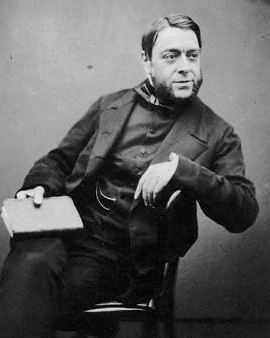Philip Henry Gosse combined his passion for natural history with his education and talent in drawing. With his depictions of flora and fauna and his natural history studies, Gosse became one of the most popular representatives of biology in Victorian England. His talent to interest a wide range of readers in scientific topics led to enormous circulation figures, so that he profited from their royalties throughout his life. In 1854, Gosse published a guide to the construction of seawater aquariums, which triggered a veritable aquarium hysteria among broad sections of the population. In the following years it became fashionable among the wealthy Victorian bourgeoisie to maintain a seawater aquarium in their homes. Gosse is therefore considered the founder of seawater aquariums and a pioneer of marine biology.
Natural history inspired the masses with its studies and discoveries of foreign cultures and ecosystems. The 19th century was also the time of great scientific expeditions. These combined qualitative research with the adventures of the great discoverers. The explorers served the needs of large sections of the population for exotic and distant worlds and became heroes. Gosse began his career as a clerk in an office on Newfoundland. Gosse was the first researcher to study Newfoundland entomology, making systematic studies and documentary drawings. As a tutor he continued his insect studies in Alabama/USA. There he also came into contact with the slave system of the southern states on the cotton plantations. In his letters from Alabama, he condemned slavery in the strongest terms on religious grounds. This occupation was followed by a one and a half year research stay in Jamaica. Back in England, he discovered his subject, the marine world, which is everywhere on the island, but was still largely unknown and unexplored.
Natural history was at the centre of social controversy in the 19th century. The new findings contradicted the religious ideas of the time. Gosse's contemporary and colleague Charles Darwin shook the foundation of the faith of the time with his work on the origin of species and the theory of evolution developed therein. But unlike Darwin, Gosse's scientific work did not trigger a conflict of faith. Gosse converted early on to a methodist and fundamentalist current of faith. Already in Newfoundland he unsuccessfully attempted to found a religious community. Besides natural history, religious fundamentalism remained the second constant in his life.
In addition to the drawings and depictions of natural history and his achievements in aquaristics, Gosse remained present to posterity through one aspect in particular: an epic father-son conflict. His son, the writer Edmund Gosse, published a biography of the father in which he portrayed Gosse as a despot and fundamentalist freak. Gosse himself had contributed to this image when, for example, in a religious pamphlet, he "exposed" fossil finds as a deliberate deception of God in an anti-religious society.
×





.jpg)
.jpg)
.jpg)
.jpg)
.jpg)
.jpg)
.jpg)
.jpg)
 - (MeisterDrucke-170695).jpg)
 - (MeisterDrucke-170695).jpg)
.jpg)
.jpg)
.jpg)
.jpg)
.jpg)
.jpg)
.jpg)
.jpg)
.jpg)
.jpg)






